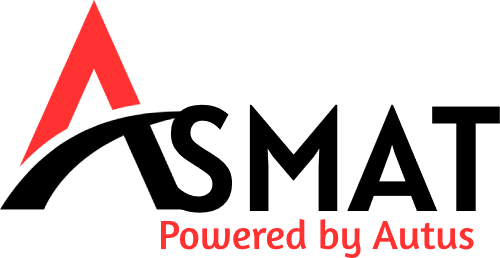
Search Engine Optimization has been gaining mass popularity in the past few years and has become an accessible tool to many. Several individuals or groups that step out to learn SEO acquire the know-how of using multiple text, image and content-based tactics to increase a page’s ranking on a search engine. However, most of the time, many optimizers tend to forget to consider the huge scale user interface and user experience differences across different digital devices, such as laptops or desktops, mobile phones or tablets.
The way a search engine’s algorithm works often shifts between devices as well as the display of meta titles and texts or a search engine’s visual layout alters itself across devices to provide the best use of space. As a consequence, if one optimizes a piece of content based only on web, they may be missing out on a large number of mobile or tablet users. Especially considering the technological revolution and the rise of mobile devices in the present era, the users of mobile phones have drastically grown, in fact even more than PC users. Despite owning laptops and PCs, the user base largely uses their mobile phones to search for answers to an instant thought or conversation for its ease of access.
The importance of optimizing in such a way that it caters to both kinds of audiences is apparent. Irrespective of this, most optimizers end up making the following mobile SEO mistakes that decreases their viewership.
SITE SPEED
Not only does it drive traffic away, but most search engines like Google have algorithms that can sense a webpage’s load feed, and makes it a crucial factor in determining a page’s ranking. These search engines will naturally list a page further away for user satisfaction since most people refuse to stay on a page that takes time to load.
To improve site speed, the following measures can be taken up –
- Compressing Images: Heavy files will take forever to load, thereby, all files displayed on websites should be compressed or resized in a way it does not lose quality of a high-resolution image but drops the weight. Many online tools and software allow easy and hassle-free compression of images and files.
- Minimizing Redirects: Removing unessential components is a vital part of easy navigation on a website and keeps a page simple and clean. To achieve this, the HTML code can be optimized, 301 redirects minimized at its most, or other factors like a Java script or CSS.
- Hosting Solutions: Hosting solutions, especially low-quality, cheaper versions, do not have the required agility to deal with high traffic. These websites will often crash and cause issues to the user, and if happened too frequently, it would lower the webpage’s ratings on search engines. Checking up on hosting solutions and opting for higher quality should be done.
A site’s speed can be conveniently checked by Google’s PageSpeed Insights to have an idea of how well a website is performing. Such checks should be done frequently and at regular intervals.
INACCESSIBLE CONTENT
Any content that is blocked such as Java or CSS scripts, images, videos or other things directly harms the algorithm render and indexes the content, thereby dropping rankings. Not being able to play certain content placed on a webpage is often a consequence of poor embedding or old technology. In order to avoid such inaccessible content, an HTML5 standard should be used for all playable content.
A minor brief to understand such blocking involves understanding robots.txt, XML sitemaps, microformats, and meta robot tags. Robots.txt is a text file with the purpose of instructing search engine robots on crawling and indexing web pages properly. Accidentally or unknowingly shutting down these crawlers such as Googlebot disallows its access to crucial elements of a site.
The Google tool can be used to test a content’s access under the Fetch option. The functionality of robots.txt files can be tested via the Google Search Console.
INTERSTITIAL ADS
Another harmful act on a webpage is too many interstitial or pop-up advertisements as it results in poor user experience and rank lower in organic search. Any pages where content is not easily accessible when transiting to a mobile device are generally not ranked higher on a search engine. However, this does not apply to legally necessary interstitial ads (such as age verifications) or login dialogs for unindexable content. These ads could include any of the following –
- Standalone interstitials that seem impossible to be gotten rid of, especially if they redirect the user to a new page
- Pop-up advertisements that hide the main content
- Deceptive layout designs, tricking users into believing they’re viewing an interstitial
All such ads can be avoided by redesigning the mobile version of a webpage, irrespective of how great it seems.
4XX ERRORS
A 4XX error implies a page is broken or cannot be reached – even working pages can be inaccessible when it cannot be crawled. Often times, a mobile user is incapable of viewing the same content as a desktop user for it has not been optimized ideally for both devices. Such errors should be immediately tackled to improve the SERP position of a website. Website auditing software has made it easier for creators to fix these issues, but having the knowledge of the cause of a 4XX error is crucial to finding a cure. Some common causes of a 4XX error are –
- When a page isn’t crawled, either because of higher response time of a webpage or the server denies access
- When the page has links that lead to a non-functioning page, such links are referred to as broken links and damage the user experience, thereby damaging SEO.
- Permanent or temporary redirects
MOBILE VIEWPORTS
The viewport meta tag is used to specify the correct viewports – this is a healthy practice to adopt since mobiles screens come in a vast array of sizes. Using fixed-width viewports across all users that are optimized keeping in mind only a few or one device in mind or poor minimum viewport parameters that leave users with smaller devices high and dry, can both be hurting the website’s SEO.
These issues can be tackled simply by enabling user scaling and controlling a page’s basic dimensions and scaling using the meta viewport tag. The screen’s width in device independent pixels should match with device width. A huge help is to always include the initial scale = 1 which ensures a 1:1 relationship with CSS pixels and device independent pixels.
ACCELERATED MOBILE PAGES
Accelerated Mobile Pages is an open-source HTML framework developed by Google to optimize for mobile web browsing and intends to help webpages last longer. Many still don’t use this free technology service provided and accessible to all to make websites smooth and efficient across mobile devices. Websites that use AMP services generally have a higher ranking on search engines, and thus, it is an SEO friendly practice to adopt to gain viewership across mobile users.
AMP issues can refer to either HTML, the style or the layout of a webpage. To use AMP, a site’s HTML code should comply with Google’s AMP guidelines. Invalid AMP pages can conveniently be checked via Site Audit Tool and should be as well, since it largely influences the indexability of a website.
RICH SNIPPETS
Rich snippets can refer to the extra star ratings next to a website on a search engine. A rich snippet can include any relevant information such as images or about the author. It allows a website to expand its scope of SEO from titles, descriptions and links and cater to a wider range of audience. Irrespectively, rich snippets are forgotten by many.
It not only expands its scope of visibility, such star ratings are also attractive to the viewers. It captures the eye and largely influences the click-through rates even when a page is not top-rated on a search engine.
LAYOUT
A mobile user will always interact with content differently as compared to a non-mobile user. A bad layout that does not cater the portrait or landscape mode of smartphones can be infuriating and annoying. It can also reduce readability and effectiveness of the design – the higher number of readers a webpage loses, the lower their ranking goes.
Most high-end websites have a separate layout design to cater to the needs on the mobile users. It should be soothing and appealing to the eyes, easy to read as well as all categories and formats should be easily accessible on a small mobile screen.
FONT
Most amateur designers and content creators disregard the many aspects of font, font ratio and spacing when working on a website. This is especially true when it comes the user interface on mobile screen. An automatic transference to a mobile format can lead to poor font use and a visual disaster. The headings, sub-headings and text should be optimized visually to meet the needs of a mobile reader for a placid experience when accessing a webpage. Ideal spacing between different font sizes or styles, different sub-headings and images and text for the dimensions of a mobile screen should also be taken into consideration and separately designed for these users.
CONSTRUCTIVE DESIGN
A website design should be both constructive and responsive. This implies that a website should manage to have all of its contents and structure the same across all devices. Not using a constructive design method means a webpage is forcefully squeezed and distorted to fit in a smaller screen, thereby damaging user experience.
A responsive design indicates that separate designs or websites or not needed to be run for the same purpose or content. Tracking and reporting analysis become ten times easier and gives the website an edge over its competitors while also attracting more mobile users as visitors.
Incorporating such minor details and fixing parts of a website can that often go ignored or unnoticed can have a huge impact on SEO and the viewership of a website. Search Engine Optimization techniques are ever changing and ever expanding, for technology is always on the rise – it is thus essential to always keep your SEO skills up to date to match up to the current times.
